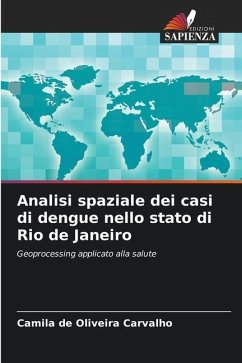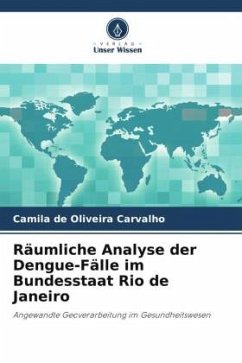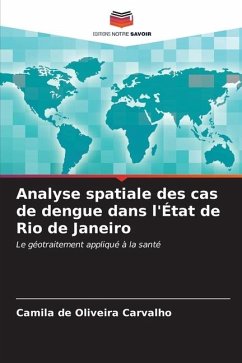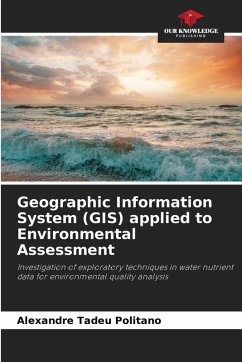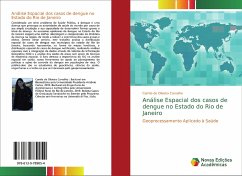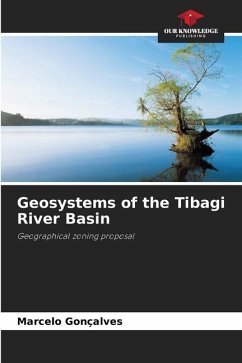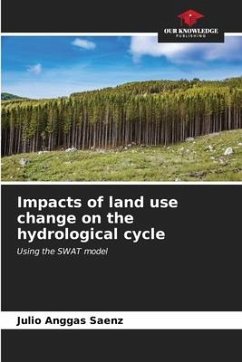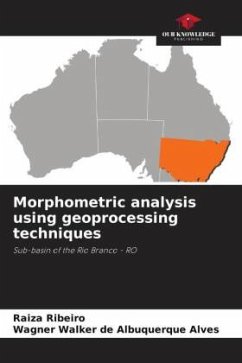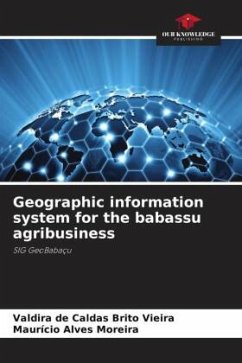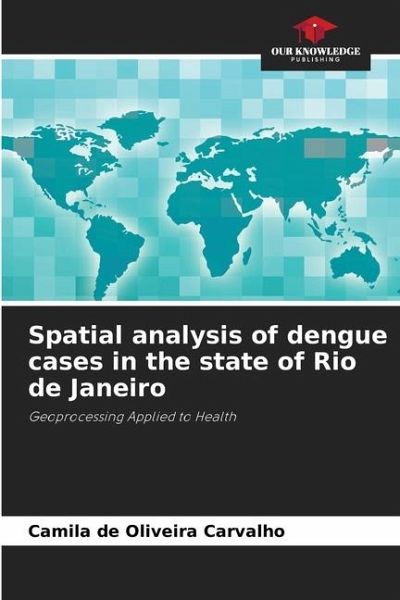
Spatial analysis of dengue cases in the state of Rio de Janeiro
Geoprocessing Applied to Health
Versandkostenfrei!
Versandfertig in 6-10 Tagen
36,99 €
inkl. MwSt.

PAYBACK Punkte
18 °P sammeln!
Considered a serious public health problem, dengue is a disease that worries health authorities around the world because of its widespread circulation and its ability to develop severe and lethal forms of the disease. The successive dengue epidemics in the state of Rio de Janeiro require a better approach and understanding of the dynamics of the disease in the region, in order to reduce the occurrence of severe cases and deaths. Within this scenario, this work analyses the spatial distribution of dengue cases in the municipalities of the state of Rio de Janeiro, seeking to represent, in the fo...
Considered a serious public health problem, dengue is a disease that worries health authorities around the world because of its widespread circulation and its ability to develop severe and lethal forms of the disease. The successive dengue epidemics in the state of Rio de Janeiro require a better approach and understanding of the dynamics of the disease in the region, in order to reduce the occurrence of severe cases and deaths. Within this scenario, this work analyses the spatial distribution of dengue cases in the municipalities of the state of Rio de Janeiro, seeking to represent, in the form of thematic maps, the spatial distribution of reported dengue cases, carrying out spatial analyses with the integration of data through the Geographic Information System (GIS) and the analysis of area data with the support of spatial statistical techniques. The book highlights the importance of GIS in spatial analysis in health, as a tool to support the planning of policies and actions tocontrol dengue in at-risk populations. The target audience is students of geosciences, health sciences, engineering and anyone interested in geoprocessing.



